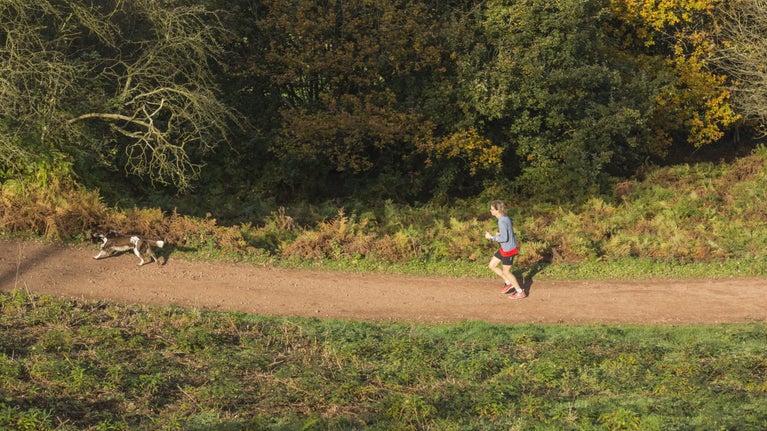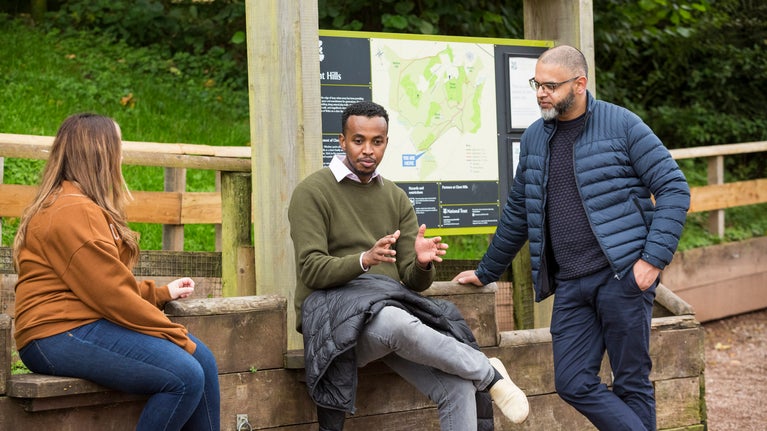FAQs for the Play Project
Below are some FAQs about the project and ways to stay up to date with project milestones.
Are you making the natural play area inclusive?
Yes, as much as we can. We’re hoping with the current designs we have, about half of the play area will be inclusive and accessible. We hope to share more details regarding the design once we have planning permission and a date work will start.
I have a child who is SEN – will you be looking at equipment for them too?
Absolutely, we want to make the natural play area as inclusive as we can, and we’re hoping about half of the play area will include accessible equipment.
Will the play equipment impact the natural environment?
We want our play equipment to compliment the area it’s in and be in keeping with the environment. Our aim is to keep any impact to the natural environment to a minimum. As we upgrade the play area, we’ll strive to keep the project in line with the National Trust sustainable strategy.
How long will this project take?
As we’ll need to go through both planning permissions and funding applications, unfortunately, we can’t say with any certainty how long this project will take. We’ll share any updates we can throughout the project, and dates when we’re able to do so.
How much will this cost. Can you afford this?
Our first step is to process the planning application, and if we are successful, we will be seeking funding from external funders to make this project a reality.
What happens if you don’t get funding?
Unfortunately, without the support of an external funder, this project will not be possible. Limited charitable funds at National Trust means the budget would not be available to progress.
I’d like to know how this project progresses. How can I stay informed?
We will, of course keep staff, volunteers and visitors informed. We’ve set up a page on our website (www.nationaltrust.org.uk/visit/worcestershire-herefordshire/clent-hills/clent-hills-play), which will be updated with project milestones. You can ask any of our onsite staff about progress too.
You can also follow us on social media, where we’ll be posting updates about the project and sharing any operational updates closer to work starting.
Who is funding this project?
We are currently looking into companies and external funders who can support our vision for play.
I didn’t know you had a play area for children, where is it?
Our current play area is located at the Nimmings wood car park entrance to Clent Hills. It’s in the wooded area which sits behind the independent, family run cafe. Unfortunately, the natural play area is currently closed to visitors, as the team carry out important work here, such as felling trees and planting fruit trees. Closing the area also allows it some time to regenerate as we add new habitats in.
If you’re passing by the natural play area on your way up the Viewpoint path, you may see the team planting fruits trees in the habitat islands that will remain in the area when the play equipment goes in. This will give birds and bugs living here a new food source and contribute to preserving the ecosystem at Clent Hills.
Where is the play trail?
The play trail is also located at the Nimmings wood car park entrance to Clent Hills. It will follow a hidden path adjacent to the Viewpoint path. It isn’t currently accessible to the public.
When will we be able to see the final design?
Earth Wrights shared their design for the natural play area with the team in August 2024. We're now in the process of applying for planning permission and hope to share designs ahead of work starting, once we’ve secured funding for the project.
I have experience in this type of work, I’d like to offer my help?
Thank you for the generous offer. We’ll be going out to tender for this work; however, our team of staff and volunteers may need some support clearing the play trail area. We’ll put an ask out for help for this closer to work beginning. We’ll update both out social media pages and Play project webpage.





